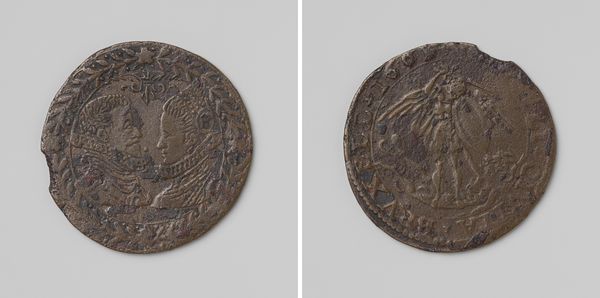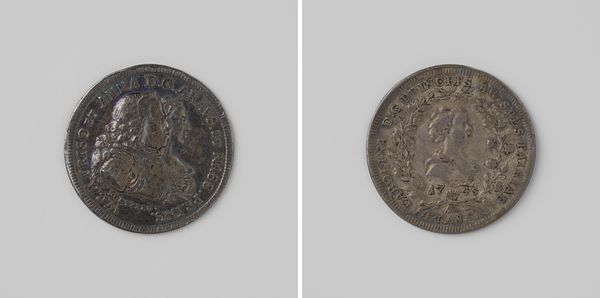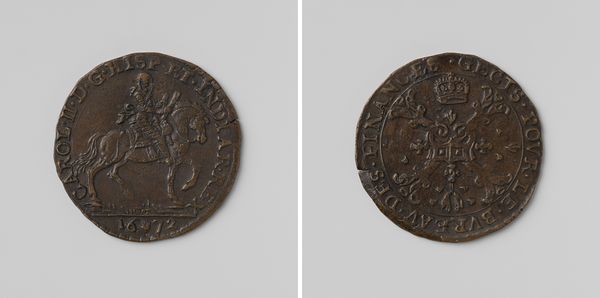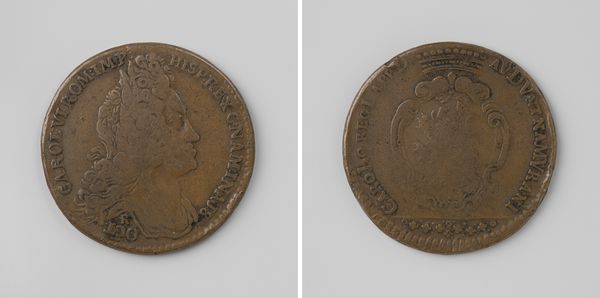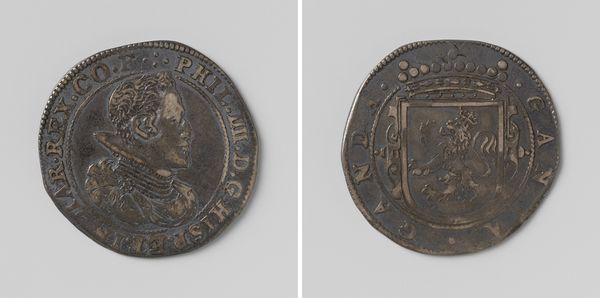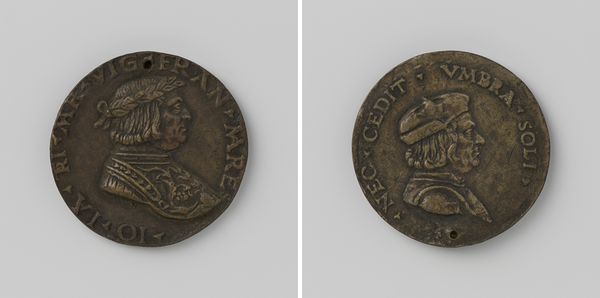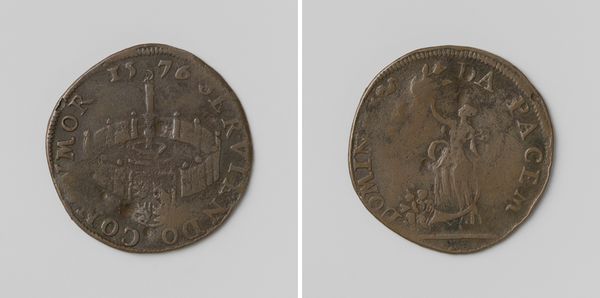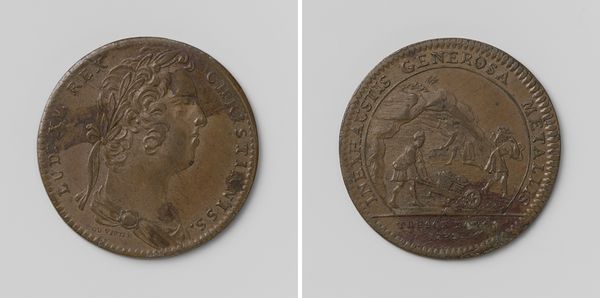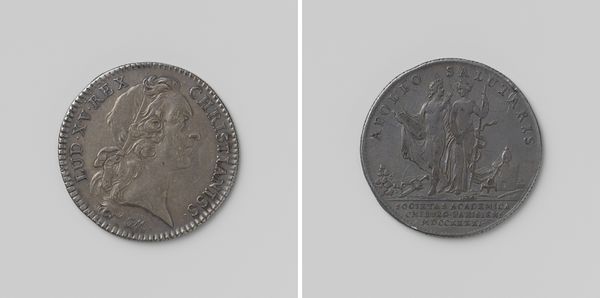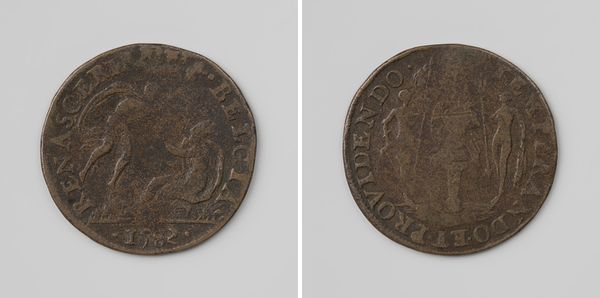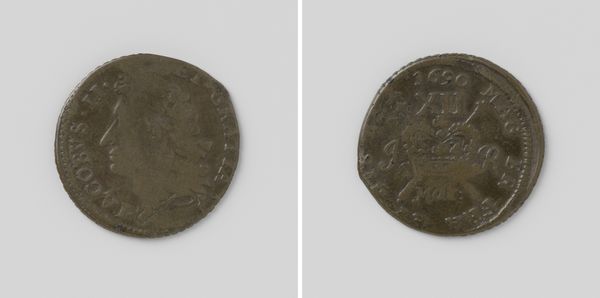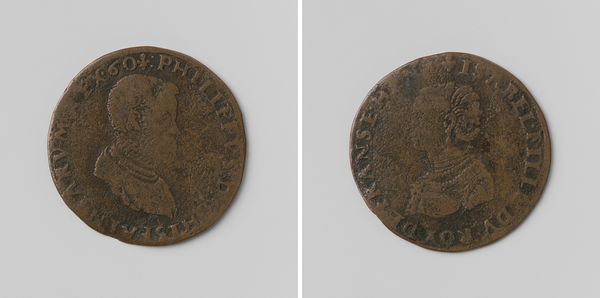![Filips IV, koning van Spanje, rekenpenning van Vlaanderen [?] by Anonymous](/_next/image?url=https%3A%2F%2Fd2w8kbdekdi1gv.cloudfront.net%2FeyJidWNrZXQiOiAiYXJ0ZXJhLWltYWdlcy1idWNrZXQiLCAia2V5IjogImFydHdvcmtzL2FmOTI4OWU2LTBiNmQtNDdlZS05NzQ1LTU4OGU4NjlmOTYyNy9hZjkyODllNi0wYjZkLTQ3ZWUtOTc0NS01ODhlODY5Zjk2MjdfZnVsbC5qcGciLCAiZWRpdHMiOiB7InJlc2l6ZSI6IHsid2lkdGgiOiAxOTIwLCAiaGVpZ2h0IjogMTkyMCwgImZpdCI6ICJpbnNpZGUifX19&w=3840&q=75)
print, metal, relief, sculpture, engraving
#
portrait
#
baroque
# print
#
metal
#
sculpture
#
relief
#
sculptural image
#
sculpture
#
ceramic
#
history-painting
#
engraving
Dimensions: diameter 3.1 cm, weight 5.56 gr
Copyright: Rijks Museum: Open Domain
Editor: Here we have a metal coin from 1660 titled "Filips IV, koning van Spanje, rekenpenning van Vlaanderen [?]" and crafted by an anonymous artist. It's really quite small, and the imagery feels quite dense. How do you approach something like this from an art historical perspective? Curator: It's true, the scale necessitates a particularly close viewing. From a formalist perspective, we can look at how the composition utilizes circular space. The coin is divided into two distinct sides: a portrait and a heraldic emblem, each contained within the circle. The lines of text, the figure's collar, the lion rampant, they all push towards the edges, creating a visual tension. Do you notice the use of relief? Editor: I do, especially around the portrait of Philip IV. It looks almost three-dimensional. Is the level of detail significant? Curator: Absolutely. Consider how the artist renders texture and form with such limited means. The folds of fabric, the king's hair, the lion's mane – each is carefully articulated through varying degrees of relief. It directs our eye. Editor: So the focus isn't necessarily about who Philip IV was, or the specific historical event commemorated? Curator: While the coin has inherent historical value, our emphasis remains on the internal relationships of form and surface, rather than external contexts. The arrangement and execution, that is our concern. Notice, for example, how light would play across the raised surfaces, animating the image. Editor: It's like uncovering a whole different layer of meaning just by focusing on the artistic choices themselves. Curator: Precisely. By examining these elements, we gain insight into the artist's skill, intention, and how it engages us, despite the passing of time. Editor: Thanks! Now I see the value in concentrating on composition and materiality. Curator: Indeed. It’s the materiality itself that dictates its form.
Comments
No comments
Be the first to comment and join the conversation on the ultimate creative platform.


